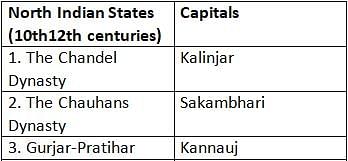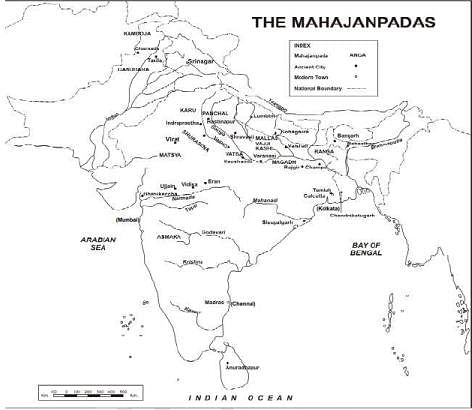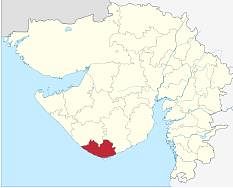Practice Test: Ancient History and Medieval- 2 - UPSC MCQ
30 Questions MCQ Test Mock Test for UPSC Prelims 2025 - Practice Test: Ancient History and Medieval- 2
Which of the following options correctly describes the descending order (highest to lowest) of the currencies prevalent during the Delhi Sultanat?
Consider the following statements:
- Mahavira did not allow women to be the propagators of Jainism.
- Jainism was not visible in southern India until the 1st century AD.
- The use of the Prakrit language helped in the emergence of the Marathi language.
Which of the statements given above is/are correct?
| 1 Crore+ students have signed up on EduRev. Have you? Download the App |
Consider the following statements about the UNESCO list of endangered languages:
- Only five Indian languages are included in the list.
- In the last 50 years, no Indian language has been declared extinct.
- Shompen and Onge are included in the list of endangered languages in India.
How many of the above statements are correct?
In the context of financial sector, the term "takeout financing" means:
With reference to the amara-nayakas of the Vijayanagara Empire, consider the following statements:
- It was a political innovation and its features were derived from the iqta system of the Delhi Sultanate.
- They were military commanders who collected taxes and other dues from peasants, craftspersons and traders in the area.
Which of the statements given above is/are correct?
In the context of tea farming in India, consider the following statements:
- Assam is the major tea producing state in India followed by West Bengal and Tamil Nadu.
- The Tea Board of India is headquartered at Digboi, Assam.
Which of the statements given above is/are correct?
Consider the following statements:
- Nigaar khana was a painting workshop set up by Humayun.
- The Princes of the House of Timur is a famous painting containing the portraits of successive members of the Mughal dynasty.
Which of the statements given above is/are correct?
With reference to ancient India, the terms 'Dharmasthiya' and 'kantakasodhana' are related to:
In the context of the health sector, consider the following statements regarding aspartame:
- It is an artificial sweetener.
- Its sweetness is less compared to sugar.
- It is declared as possibly carcinogenic by the World Health Organization.
How many of the statements given above are correct?
Consider the following passage:
It is dubbed to be India's first private hill station. It is located in Mulshi Valley in the Western Ghats. It was developed by Hindustan Construction Company which had envisaged the hill station as a Europeanstyle city. The Varsagaon dam on Mutha river is close to this hill station.
Which of the following places is being described in the passage given above?
Consider the following pairs:
Ancient scholars/ personalities : Fields associated with
- Charaka : Medicine
- Aryabhatta : Mathematics
- Banabhatta : Literature
- Varahamihira : Surgery
How many of the above pairs are correctly matched?
Consider the following statements with respect to tool-making in the prehistoric period:
- Tools of the Paleolithic period were rough and heavy.
- Tools of the Mesolithic period were called microliths as they very small in size.
- Neolithic period yielded various types of bone objects such as needles and scrapers.
How many of the statements given above are correct?
With reference to the cave paintings of Ajanta, consider the following statements:
- The illustrations of the Jataka stories are in greater detail and have no use of ornamental designs.
- The murals of Ajanta bear a secular rather than a religious message.
- There are no paintings depicting Buddha's life after he had reached enlightenment.
How many of the above statements are correct?
Arrange the following Mahajanapadas from east to west:
- Mastya
- Vatsa
- Anga
- Magadh
Select the correct answer using the code given below.
The term Majorana zero modes recently seen in the news is a:
Consider the following statements about the upcoming Ram temple at Ayodhya:
- It has been built in Nagara-style of temple architecture.
- Its superstructure has been carved out of Rajasthani Pink marble stones.
- The chief architect of this temple is Mr. Chandrakant Sompura.
How many of the above statements are correct?
Consider the following statements about a personality from medieval India:
- He was a merchant from Persia.
- He was a military genius and conquered Konkan and Goa.
- He made endowments to build a college at Bidar
- He was persecuted and sentenced to death in 1481 by Muhammad Shah III.
Which of the following personalities has been described in the statements given above?
With reference to the Kalamkari painting, consider the following statements:
- Sri-Kalahasti, Andhra Pradesh is the best known centre of Kalamkari art.
- In Tamil Nadu, the Karuppur kalamkari paintings have recently received the geographical indication (GI) tag.
- The Masulipatnam kalamkari was widely influenced by Persian motifs and designs.
How many of the above statements are correct?
Who among the following kings was called by the Greeks as “Amitrochates or Amitraghata” meaning slayer of enemies?
The Harappan civilization period is called the age of the first urbanization in India. Which of the following is called the period of 'second urbanization'?
With reference to the Vijayanagara Empire, consider the following statements :
- The Sangama dynasty was the first dynasty of the empire.
- Krishnadeva Raya, a prominent ruler of the empire, belonged to this dynasty.
- In 1565, Krishnadeva Raya's forces were routed by the combined armies of Bijapur, Ahmadnagar, and Golconda in the battle at Rakshasi-Tangadi.
How many of the above statements are correct?
Consider the following statements regarding Urban Infrastructure Development Fund (UIDF):
- UIDF will focus on metro cities with a population of a million or more.
- Eligible loan amount under the scheme would be based on the size and location of the project.
- Heritage conservation is one of the eligible projects under the scheme.
How many of the statements given above are correct?
The ‘Masahat system’ during the Medieval period is best associated with
Consider the following pairs:

How many of the above pairs are correctly matched?
Which of the following is not correct regarding the Chalcolithic period?
In the context of Babur's victory at Panipat, consider the following statements:
- Babur's army at Panipat was numerically superior to Ibrahim Lodi's forces.
- Babur's use of field cannon and matchlockmen was pivotal in his victory at Panipat.
- Despite his victory at Panipat, Babur encountered Afghan and Rajput resistance.
- The Panipat battle shattered Lodi's power and extended Babur's rule to Delhi and Agra.
Which of the statements given above are correct?
‘Amogha-III’ recently mentioned in the news refers to which one of the following?
Which battle dealt a significant blow to the dream of a united Rajasthan extending to Agra?
A person goes to a shop to buy some jewellery. He sees 22K916, 18K750, 14K585 etc, written on various pieces of jewellery there. These codes directly indicate which one of the following?
During the reign of which one of the following rulers did Mahmud Ghazni invade Gujarat and ravage the temple of Somnath?
|
16 videos|4 docs|70 tests
|
|
16 videos|4 docs|70 tests
|




















